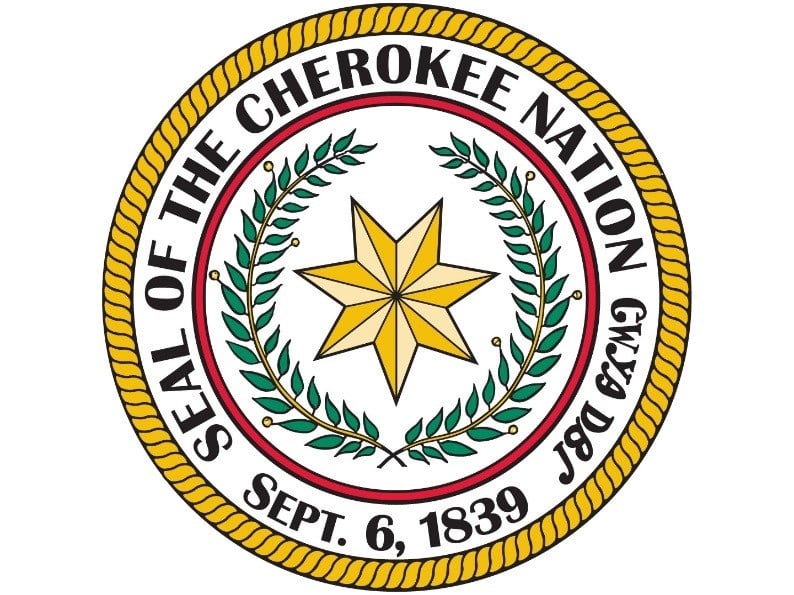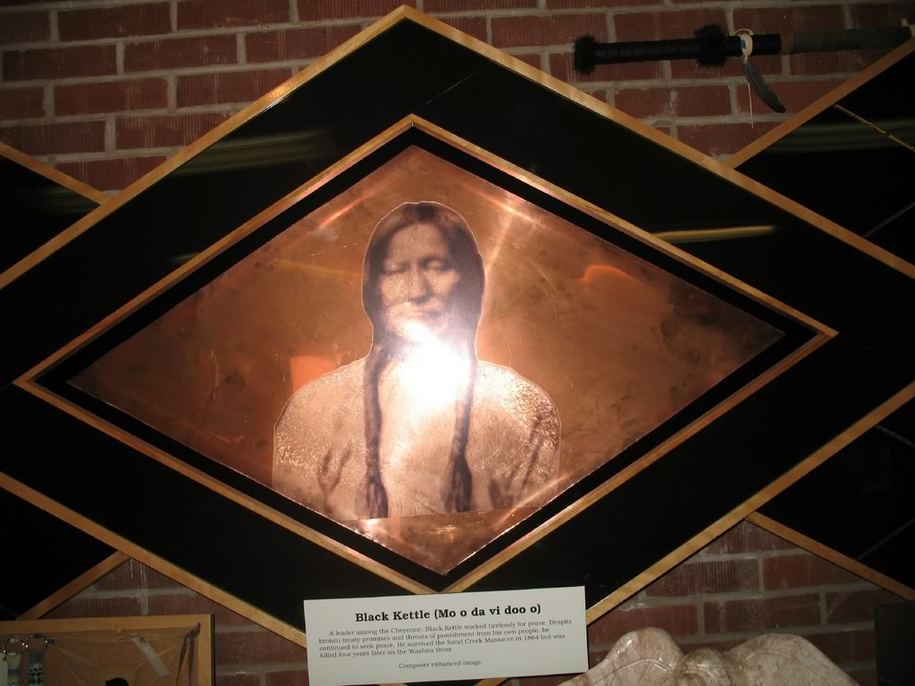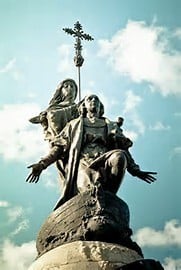Buffalo Hunting on the Northern Plains
( – promoted by navajo)
The Great Plains stretches from the Canadian provinces in the north, almost to the Gulf of Mexico in the south, from the Rocky Mountains in the west to the Mississippi River in the east. Plains Indians are those which are most often stereotyped by movies and other media as representing all Indians. The buffalo, the horse, and the tipi are all important items in Plains cultures.
By 1800, it was estimated that at least 30 million buffalo roamed the Great Plains. For the Plains Indians, the buffalo provided them with food, shelter, tools, and spiritual guidance. For some of the Plains tribes, such as the Blackfoot, the buffalo was considered to be “real food” and all other flesh was considered to be inferior. Buffalo hunting was not something done for sport, but the buffalo were harvested so that the people could live.
There were three main methods used by the Plains tribes in harvesting the buffalo: the buffalo jump, the impound, and the horse-mounted hunt.
The Buffalo Jump:
The buffalo jump involved luring the buffalo over high precipices along river valleys. Since the cliff was not movable and the buffalo were rarely close to the jump site, this meant that the people had to bring the buffo in. To lure the herd to the jump site, a young man, disguised with buffalo horns and robe, would decoy the herd. The job of decoy was given only to the fastest runners as they had to run faster than the buffalo in order to escape death. The runners also had to be able to run for many miles, luring the herd to the jump. While the runner lured the herd, the people would fan out in a long V-shaped formation from the jump site. Waving blankets and robes, they would help guide the animals in and panic them into a stampede. Crow warrior White-Man-Runs-Him describes the buffalo jump:
“When we got the buffalo up near the edge of the precipice we would all wave our blankets and buffalo robes and frighten the buffalo and they would run off the steep place, falling into the valley below, one on top of another.”
The American explorer Meriwether Lewis described the buffalo jump this way:
“one of the most active and fleet young men is selected and disguised in a robe of buffalo skin… he places himself at a distance between a herd of buffalo and a precipice proper for the purpose; the other Indians now surround the herd on the back and flanks and at a signal agreed on all show themselves at the same time moving forward towards the buffalo; the disguised Indian or decoy has taken care to place himself sufficiently near the buffalo to be noticed by them when they take to flight and running before them they follow him in full speed to the precipice; the Indian (decoy) in the mean time has taken care to secure himself in some cranny in the cliff… the part of the decoy I am informed is extremely dangerous.”
At the bottom of the cliff, the people would set to work processing the dead buffalo into meat, hide, and tools. All parts of the animal were used. Some parts of the buffalo, such as the tongue, brains, and liver were often consumed raw. Other parts were broiled or boiled.
Pemmican was made from the pounded, dried meat mixed with melted fat, marrow, and a paste from chokecherries which not only added flavor but also helped as a preservative. Sometimes this mixture was placed in skin casings and sometimes it was dried into cakes.
The buffalo provided the Plains Indians with far more than food. Buffalo hair was used for making ropes and pads; the horns and hoofs were made into implements and utensils; the sinew was used for sewing and for making bow strings; and the hides were used for clothing, blankets, and tipi covers. A typical northern Plains lodge required 12-20 buffalo hides for covering. Generally, the hides for lodges were obtained from hunts conducted in the late spring or early summer as the buffalo shed their winter coats at this time. The hides from buffalo killed during the fall and winter hunts were ideal for making robes.
In organizing the hunt, several bands might come together and the rewards of the hunt would be divided equally among all who were present. A single hunt might harvest a few dozen buffalo up to a couple of hundred.
Shown below is the Head-Smashed-In Buffalo Jump in Alberta, Canada.

The Buffalo Impound:
When a suitable cliff was not available, some of the Indian nations would harvest the buffalo using an impound method. This involved building a timber corral and enticing the buffalo into it so that they could be killed. The idea was to construct the impound carefully so that it looked solid. If the buffalo could not see ‘daylight’ they would not try to burst through the fences. As with the use of the buffalo jump, enticing the buffalo into the impound was not an easy task, nor was it always successful. It was not uncommon to bring the buffalo into the corral from several miles away.
The Plains Cree were among the most proficient users of the impound method. The Plains Cree often used the impound for their winter buffalo hunt. Each impound could only be used through one winter; the following year a new one had to be built. In making the corral, the Cree would first select a thicket and then clear an area about 30-40 feet in diameter. A wall about 10-15 feet high was then constructed around the clearing. The entrance to the impound was placed to the east and two sturdy trees located about 20 feet apart were used as the entrance gates. A log was then lashed between the two trees at the height of the wall and a ramp constructed from the ground to this log.
At an oblique angle to the entrance of the impound, a chute was built to guide the buffalo. The chute was about 100 yards out and made a sharp turn right before the entrance. With the sharp turn, the buffalo herd would not see the corral until it was too late to stop.
To bring the buffalo into the chute leading to the impound, the hunters would locate a herd and then begin driving it toward the chute by slapping their folded robes against the ground or the snow. The herd would move away from the noise and then settle down to graze again. The men would repeat the action, moving the herd toward the chute. When the herd got close to the entrance of the chute, a single horseman, using a fast horse, would ride out and guide the herd into the chute.
Once inside the impound, the buffalo would mill about in a clockwise fashion and would be shot with arrows. Before butchering the dead animals, the medicine man would sing a song to the spirits. Everyone who was camping in the area got a share of the buffalo, regardless of whether they had helped build the corral or whether they belonged to the band that had constructed it.
Horse-Mounted Buffalo Hunting:
After the acquisition of the horse, the buffalo was also hunted from horseback. The animals would be brought down using a bow and arrow or a lance. In hunting buffalo from horseback, the preferred weapon was the bow and arrow, even after firearms became common. The bow was preferred for two reasons: (1) it was difficult to reload a muzzle-loading gun at full gallop, and (2) the hunter could easily reclaim the animals by looking at and identifying their own arrows. Blackfoot chief Mountain Chief describes hunting buffalo with a bow and arrow:
“Sometimes when a hunter rode side by side with a buffalo, and shot the animal, the arrow would go clear through. The Indians were very proud and careful of their arrows. They did not wish to break them. That is the reason why they shot them on the side, so that when the buffalo fell the arrow would not be broken.”
Buffalo hunting was generally a communal undertaking. A lone hunter might startle the herd and as a result little meat could be taken. Therefore, most of the tribes had one of the warrior societies supervise the hunters to make sure that no one hunted early. Blackfoot chief Mountain Chief describes what happened when a lone hunter would disobey the warrior society:
“When they got him, they broke his gun, his arrows and bow, broke his knife, cut his horse’s tail off, tore off his clothes, broke his saddle in pieces, tore his robe in pieces, cut his rope into small bits, also his whip. Then they sent him off afoot.”
Among the Assiniboine, horse-mounted hunters supervised by the Soldiers’ Society and using bows and arrows would surround the buffalo herd. In an hour’s time, 80-100 hunters could kill 100-500 buffalo. The hunter who killed the animal claimed the hide and the choicest pieces of meat. All who aided in the butchering were entitled to a portion of the meat.



